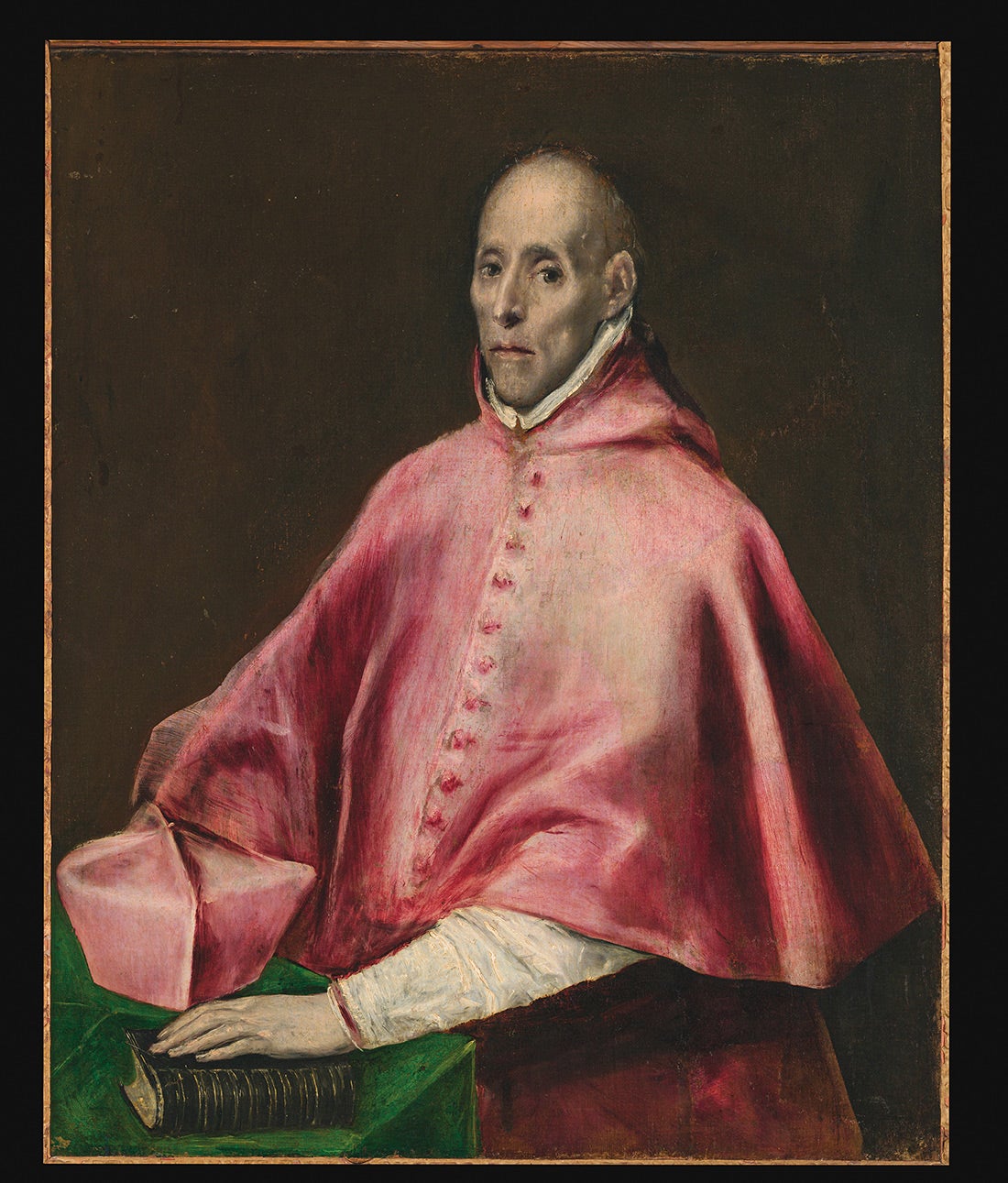lens
Innovative Artificial-Intelligence Tools for Solving Art Mysteries
 Image: Courtesy of Hospital de Tavera and Factum Foundation
Image: Courtesy of Hospital de Tavera and Factum Foundation CWRU researchers are working to identify the portions of this 17th-century El Greco painting, 'Portrait of Juan Pardo de Tavera' that were restored after the work was slashed into pieces during the Spanish Civil War. While the findings could resolve lingering questions about the painting, the team has a broader goal: to refine the way they 'train' the machine neural network they developed to identify different brush strokes.
Case Western Reserve University researchers in physics and art history have developed what they believe is an unprecedented way to help authenticate paintings.
The team is combining artificial intelligence (AI) and a 3D mapping system to distinguish one painter’s brush stroke from another’s, seeing them like distinct fingerprints that can’t be controlled by the artist or seen by the human eye.
The system also could help conservators restore paintings and others in the art world identify forgeries or document which portions of a Renaissance work were created by a master and which by workshop assistants to boost production.
The researchers unveiled their initial work recently with a published study that received international attention. It showed that their computer system correctly differentiated among the work of four art students over 95% of the time.
It “stunned us by actually being able to tell with very high accuracy whose hand had painted even a tiny fraction of a brushstroke,” said Kenneth Singer, PhD, the Ambrose Swasey Professor of Physics who leads the team, which includes Elizabeth Bolman, PhD, the Elsie B. Smith Professor in the Liberal Arts and chair of the Department of Art History and Art; Michael Hinczewski, PhD, an associate professor in physics; as well as the research idea’s originators: Lauryn Smith, an art history doctoral student and Michael McMaster, PhD (GRS ’19, physics).
The researchers are also collaborating on analyses of paintings in different museums with the nonprofit Factum Foundation in Madrid, Spain and conservators from the Cleveland Museum of Art.





